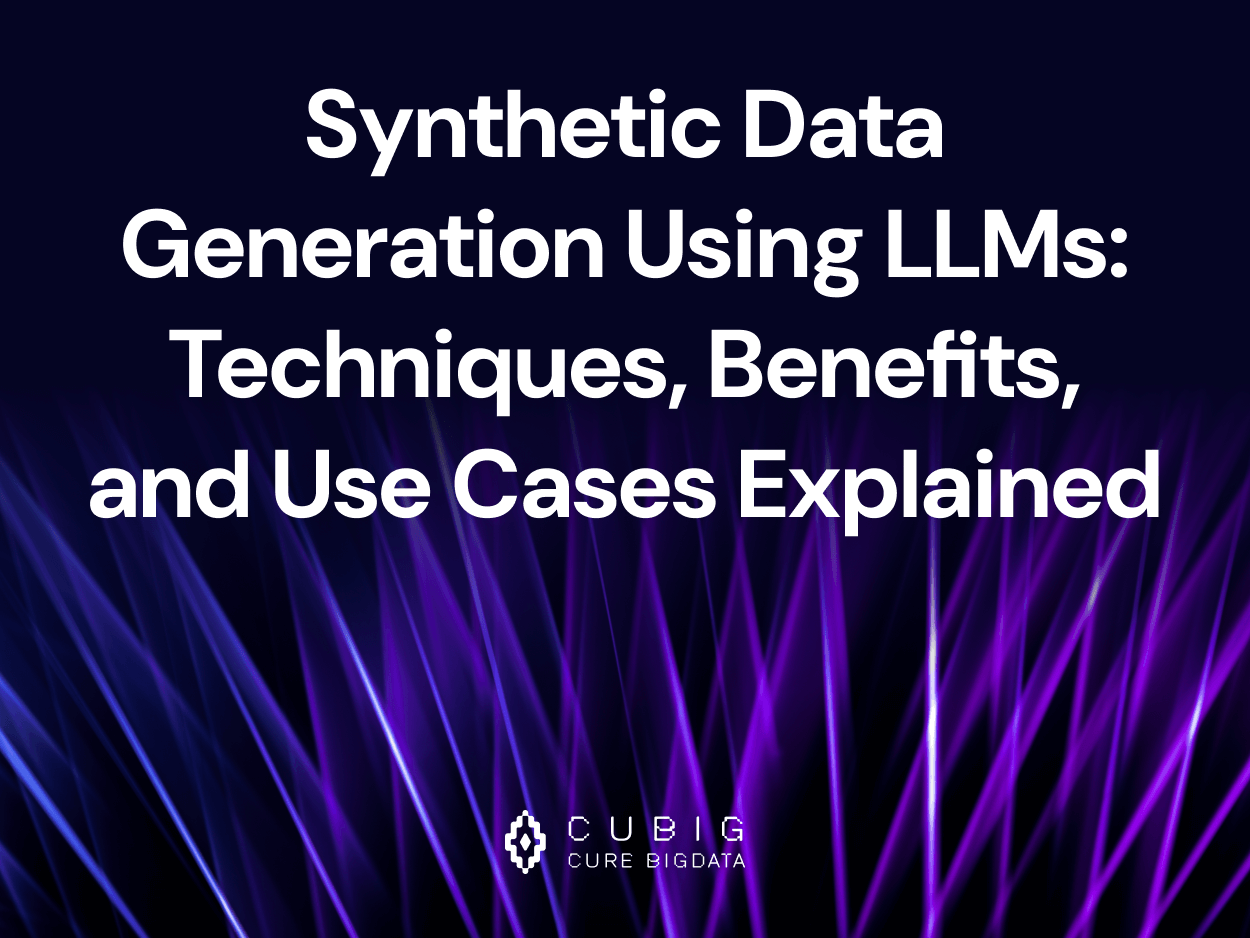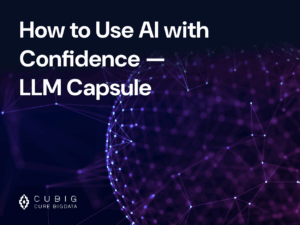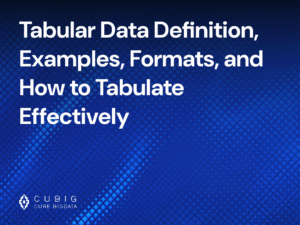Synthetic Data Generation Using LLMs: Techniques, Benefits, and Use Cases Explained
Table of Contents
What is Synthetic Data for LLM?
Definition and Role of Synthetic Data in Large Language Models
Synthetic data for LLM refers to artificially generated text or data that mimics real-world examples, specifically created to train or fine-tune large language models (LLMs). Rather than relying on sensitive or proprietary datasets, synthetic data offers a scalable and privacy-preserving alternative. It can be used to simulate various language patterns, domains, and formats, making it valuable for both foundational model training and domain-specific tuning.
The role of synthetic data in LLM development includes data augmentation, model stress testing, edge-case simulation, and filling gaps in underrepresented linguistic categories. This capability is particularly important when acquiring or annotating real data is impractical, risky, or restricted due to legal concerns.
Why Synthetic Data for LLMs is Critical in Healthcare and Sensitive Domains
In healthcare, financial services, and law, data access is highly regulated due to privacy concerns and compliance requirements. Synthetic data for LLMs offers a privacy-safe mechanism for training models without compromising individual confidentiality. This is crucial in healthcare, where clinical texts, diagnostic records, and patient interactions are protected under laws such as HIPAA.
Using synthetic data for LLMs, developers can simulate rare diseases, complex interactions, and multilingual patient narratives. This allows LLMs to learn medical reasoning, contextual inference, and personalized dialogue generation. Additionally, synthetic data generation with LLMs enables research institutions and AI companies to collaborate on shared models without transferring real patient data.
Synthetic Data Generation Using LLM
How to Generate Synthetic Data Using LLMs: Tools and Methods
To initiate synthetic data generation using LLMs, developers start with defining a generation purpose and choosing the right LLM, such as GPT-4 or open-source alternatives like LLaMA. Tools like Hugging Face Transformers, OpenAI APIs, and Google’s PaLM API support controlled text synthesis. These platforms allow fine-tuning, zero-shot prompting, and few-shot learning methods to produce domain-specific outputs.
Other open-source tools, such as LangChain and PromptLayer, assist in orchestrating synthetic data pipelines and logging performance metrics. For non-textual or hybrid data generation, integration with table generators, schema-based templates, and JSON output formats is essential.
Synthetic Data Generation with LLMs for Structured and Unstructured Inputs
Synthetic data generation with LLMs accommodates both structured (e.g., CSV tables, JSON logs) and unstructured (e.g., clinical narratives, free-form dialogue) formats. When dealing with structured inputs, LLMs can simulate tabular reports, medical billing codes, and database exports. Conversely, unstructured data generation focuses on emulating natural language, chatbot dialogues, and long-form documents.
Combining both types of inputs enables richer training corpora. For example, a healthcare application might use synthetic lab reports alongside synthetic physician notes to train a multitask diagnostic assistant. In insurance, synthetic policy forms and unstructured claims descriptions can be synthesized together to improve document classification accuracy.
Prompt Engineering and Fine-Tuning Approaches
Prompt engineering is key to effective synthetic data generation using LLMs. Carefully designed prompts elicit desired responses from a model while minimizing hallucinations. Techniques include using context-rich examples, instruction-based prompts, and response framing. Templates are often built iteratively, based on feedback loops from validation metrics.
Fine-tuning an LLM on a curated dataset of synthetic text can further specialize it for a domain. For instance, synthetic data for LLMs in healthcare can be enhanced using clinician-authored prompts followed by reinforcement learning from domain-specific feedback. This hybrid approach balances prompt effectiveness with long-term model adaptability.
Use of Synthetic Text, Tables, and Multimodal Data in LLM Training
LLMs can benefit significantly from exposure to synthetic multimodal data that includes not only free-form text but also structured tables and visual content like images. These diverse formats simulate real-world data complexity, helping models generalize better across tasks. For instance, synthetic patient timelines can mimic longitudinal health records, while multimodal radiology summaries help integrate textual and image-based clinical information. Conversational agents in healthcare can also be improved by training with simulated dialogue data that reflects nuanced medical interactions.
Tabular synthetic data, in particular, enhances a model’s capability to perform numerical reasoning, classification, and relational inference. This is especially impactful in domains such as clinical trials, insurance records, or financial reports, where tabular formats are common and critical. The controlled variability of synthetic tables allows for targeted evaluation and stress testing of model reasoning capacity in structured data environments.
When structured (e.g., tables) and unstructured (e.g., narratives) synthetic inputs are coherently aligned, LLMs can learn to recognize deeper contextual relationships between high-level descriptions and precise data points. This alignment plays a foundational role in building QA systems, summarization models, and diagnostic agents that require accurate interpretation of both narrative context and data-driven evidence.
Flowchart: Synthetic Data Generation with LLMs
[Flowchart Image Placeholder: LLM Prompt → Generated Text/Table → Validation → Integration into Dataset]
Core Techniques in Synthetic Data Generation Using LLM
Pretrained Language Models as Synthetic Data Engines
Pretrained LLMs such as GPT, BERT derivatives, and Claude are commonly employed as core engines for synthetic data generation. These models, pre-trained on vast corpora, can mimic domain-specific linguistic patterns with minimal additional supervision. Their transfer learning capabilities make it feasible to adapt them to specialized tasks, enabling even moderately fine-tuned versions to produce high-quality synthetic content. By conditioning prompts appropriately, users can steer generation toward desired formats, styles, and content domains.
Reinforcement Learning for Refining Synthetic Outputs
Reinforcement learning (RL), and specifically Reinforcement Learning from Human Feedback (RLHF), is used to fine-tune synthetic data outputs by rewarding alignment with human-like reasoning and penalizing issues like hallucination or incoherence. In the context of LLM-based generation, RL helps shape outputs that are not only syntactically correct but also factually accurate and semantically appropriate. This is vital when synthetic data is meant to simulate high-stakes content such as legal clauses, medical reports, or financial disclosures.
Combining LLMs with GANs or VAEs for Hybrid Synthesis
For scenarios requiring higher data variability or realism, hybrid architectures that combine LLMs with generative models like GANs (Generative Adversarial Networks) or VAEs (Variational Autoencoders) are employed. LLMs handle the generation of textual or semantic components, while GANs or VAEs provide a mechanism to simulate more complex distributions, particularly for images or latent features. This combination is especially useful in multimodal use cases, where textual reports must align with simulated visuals, such as X-rays or pathology slides.
How to Generate Synthetic Data Using LLM
Define Data Purpose and Output Format
The first and most critical step in synthetic data generation using LLMs is to clearly define the purpose of the dataset. This may include goals such as model pretraining, performance benchmarking, fine-tuning for specific tasks, or robustness testing. Once the objective is set, selecting the appropriate output format—whether plain text, tabular data, or a hybrid structure—ensures alignment with downstream application requirements. For example, QA system training demands dialogue-style prompts and diverse question-answer pairs, whereas a classification task may call for labeled tabular records with consistent formatting.
Design Prompts for LLM Data Generation
Effective prompt design is essential to guide LLMs in producing structured, meaningful synthetic data. Prompts should encapsulate the context, define constraints, and suggest output formats to improve generation consistency. Incorporating domain-specific terminology and providing example input-output mappings within prompts can further increase generation quality. Utilizing templated prompt libraries or prompt engineering tools allows for scalable generation while preserving sample diversity across domains and tasks.
Validate and Filter Synthetic Outputs
After generation, the synthetic outputs must be rigorously filtered to eliminate content that is biased, irrelevant, or of low fidelity. Validation criteria often include syntactic correctness, factual alignment with reference data, and task-specific representational balance. While automated scoring metrics like BLEU, ROUGE, and perplexity provide initial signals, these are frequently supplemented by rule-based filters or human-in-the-loop review to ensure dataset integrity. This step is particularly vital when synthetic data is used in regulated industries like healthcare or finance.
Assess Model Performance and Iterate
Following the integration of synthetic data into model training workflows, it is important to continuously evaluate the resulting model’s performance. Key techniques include zero-shot evaluation, targeted ablation studies, and downstream task-specific benchmarking. By systematically comparing performance on synthetic vs. real-world validation sets, practitioners can identify both the strengths and limitations of the generated data. These insights feed back into prompt design, data format decisions, and model fine-tuning for future generation cycles.
[Image Placeholder: Generation Workflow – Purpose → Prompt Design → Generation → Validation → Model Training → Feedback]
Synthetic Data for LLMs in Practice: Case Studies
Medical QA Systems Trained on Synthetic Clinical Text
Medical question-answering (QA) systems rely on large volumes of annotated clinical data to understand and respond accurately to domain-specific queries. However, real patient data is difficult to access due to privacy regulations, ethical concerns, and data-sharing limitations. Synthetic data generation using LLMs offers a viable alternative by simulating realistic yet non-identifiable clinical records. These include patient histories, diagnostic findings, lab results, and physician notes written in authentic medical language. Such datasets allow researchers to pre-train and validate models in a risk-free environment, accelerating development cycles. Moreover, synthetic clinical text can be tailored to highlight edge cases or rare conditions, helping QA systems learn to handle diverse and complex queries.
Synthetic Insurance Claims Used for Document Classification
The insurance industry deals with large volumes of semi-structured and unstructured documents, including claim forms, policy documents, and incident reports. LLM-based synthetic data generation allows for the creation of varied and realistic claim scenarios that mimic the diversity seen in real-world submissions. This includes different claim categories, inconsistent terminology, varying document formats, and fraud-related anomalies. By training document classification models on such synthetic datasets, developers can improve the robustness of classification systems and reduce bias from overfitting to narrow data samples. Additionally, synthetic claims data can be used to stress-test fraud detection algorithms under controlled yet realistic variations, improving both recall and precision in live settings.
LLM Fine-Tuning with Synthetic Data in Low-Resource Languages
Many languages around the world are underrepresented in digital corpora, which limits the performance of large language models in those regions. Generating synthetic data using LLMs trained or adapted to multilingual settings enables the rapid creation of language resources for low-resource languages. These datasets may include conversational dialogue, educational texts, technical manuals, and culturally contextual narratives. By fine-tuning LLMs on this synthetic content, developers can build language models that understand and generate text in languages with limited native data. This contributes to reducing linguistic inequality in AI access and fosters the development of tools such as voice assistants, translation engines, and educational platforms for underserved linguistic communities.
Azoo AI: Scalable Synthetic Data Platform for LLM Use Cases
Azoo AI provides a robust and scalable synthetic data platform specifically designed to support LLM development in sensitive and regulated environments. Its architecture enables high-volume synthetic data generation without requiring access to real-world datasets. By leveraging privacy-by-design principles, Azoo AI ensures that no original data is exposed or stored during the generation process. Key features include domain-specific prompt libraries, structured/unstructured data synthesis pipelines, and support for multimodal outputs such as text, tables, and visual metadata. Azoo’s platform also includes tools for validation, de-biasing, and dataset documentation, making it suitable for use in healthcare, finance, and legal AI systems. With strong emphasis on compliance (e.g., HIPAA, GDPR), Azoo AI empowers organizations to build and fine-tune LLMs safely, efficiently, and at scale.
Benefits of Synthetic Data Generation for LLMs
Data Augmentation without Privacy Risks
Generating synthetic data with LLMs allows organizations to expand and diversify their training datasets without exposing sensitive or personally identifiable information (PII). In industries such as healthcare, finance, and government services, strict compliance with data protection laws like HIPAA or GDPR limits access to real user data. By producing synthetic alternatives that retain statistical and contextual characteristics of original datasets—without linking to actual individuals—teams can explore use cases such as patient record analysis, financial forecasting, or legal document modeling in a compliant and risk-free manner.
Cost-Efficient Scaling of Domain-Specific Corpora
Creating high-quality, annotated datasets in specialized domains—such as law, medicine, or engineering—is time-consuming and resource-intensive. Synthetic data generation with LLMs offers a scalable and budget-friendly alternative, allowing developers to generate thousands of labeled examples that reflect domain-specific patterns. This accelerates dataset curation, reduces dependency on manual annotation, and facilitates faster cycles of model training and deployment. Organizations can simulate edge cases, rare conditions, or multilingual scenarios with minimal marginal cost, enabling broader experimentation and iteration.
Bias Reduction and Fairness Enhancement in LLM Outputs
Real-world datasets often carry inherent biases, leading LLMs to replicate and even amplify harmful stereotypes or exclusions. With synthetic data, it is possible to programmatically generate balanced, representative samples that correct for demographic or cultural skew. For example, dialogue datasets can be diversified by including varied accents, genders, and socio-economic contexts. Developers can simulate counterfactuals and minority scenarios that may be underrepresented in natural data, resulting in models that are fairer, more inclusive, and better aligned with ethical AI standards.
Faster Iteration and Prototyping with Synthetic Scenarios
Synthetic data enables rapid testing and iteration during the early stages of model development, even before access to real-world data is secured. Teams can prototype task-specific architectures, evaluate prompt designs, or explore new data augmentation techniques by generating synthetic datasets tailored to different hypotheses. For instance, a QA system can be evaluated on synthetic knowledge base entries, or a chatbot can be stress-tested with simulated conversations. This leads to shorter development cycles and reduces dependency on external data collection pipelines.
Challenges in Synthetic Data for LLMs
Evaluating Realism and Utility of Synthetic Text
One of the primary challenges in using synthetic data is ensuring that the generated text is realistic and useful for downstream training. Synthetic outputs that lack structure, contain generic phrasing, or fail to capture domain-specific nuances may negatively impact model learning. Unlike real data, where authenticity is assumed, synthetic data requires explicit validation to verify that it mimics real-world distributions and captures the variability needed for generalization. Quality checks must assess linguistic fluency, semantic correctness, and task relevance to determine utility.
Controlling Hallucinations and Semantic Drift in LLM-Generated Data
Large language models are known to generate plausible-sounding but factually incorrect content—referred to as hallucinations. In the context of synthetic data generation, this can lead to flawed training signals, particularly in sensitive areas like healthcare or finance. Moreover, semantic drift—where outputs deviate from the intended meaning over the course of long sequences or repeated generation—can introduce subtle inconsistencies. Mitigating these issues requires techniques such as prompt tuning, reinforcement learning, and human-in-the-loop filtering to ensure that synthetic outputs remain anchored to correct information and task objectives.
Regulatory and Ethical Considerations in Synthetic Data Use
While synthetic data is designed to be free from real-world personal identifiers, its generation and application still entail significant regulatory and ethical considerations. For instance, when simulating sensitive domains such as mental health, rare diseases, or criminal behavior, the synthetic content must avoid reinforcing social stigma, misinformation, or harmful stereotypes. Moreover, biased prompt designs can inadvertently encode discriminatory patterns, even if the data is artificial. To address these risks, organizations must adopt transparent and traceable synthetic data workflows. This includes detailed documentation of the generation process: which LLMs were used, how prompts were formulated, what post-processing or filtering methods were applied, and for which downstream purposes the data is intended. Such documentation ensures ethical accountability, facilitates external audits, and supports compliance with emerging AI governance frameworks. Particularly in high-stakes domains like healthcare or finance, synthetic datasets may be subjected to internal review boards or external legal audits before being approved for production deployment.
Future Directions: Synthetic Data Generation for LLMs
Streaming Synthetic Data Pipelines for Continual Learning
Looking ahead, a promising advancement in synthetic data generation for LLMs is the development of streaming pipelines that generate, validate, and inject synthetic samples into training loops in real time. Rather than relying on a static dataset, these dynamic systems would continuously supply fresh, context-aware data, enabling models to adapt to evolving language use, emerging knowledge, or domain shifts. This approach supports continual learning, mitigates catastrophic forgetting, and improves performance in real-world deployment environments where user input patterns change over time. Additionally, real-time validation modules can assess the utility, novelty, and coherence of generated samples on the fly, ensuring that only high-quality data contributes to model updates. These systems will be particularly valuable in domains where data availability is seasonal or episodic, such as disease outbreaks, financial market shifts, or policy updates.
Integration with Federated Training and Privacy-Preserving AI
Another key direction is the integration of synthetic data generation into federated learning frameworks. In this setup, synthetic data can be generated locally within edge devices or institutional silos, then used to augment training without transmitting sensitive or raw user data to a central server. This hybrid model offers strong privacy guarantees by combining synthetic abstraction at the data level with federated governance at the infrastructure level. Such privacy-preserving pipelines are highly relevant in sectors like personalized medicine, smart healthcare devices, and confidential legal analytics. Moreover, synthetic data can serve as a bridge between institutions that are otherwise unable to share data due to legal constraints—by aligning data schemas and semantics through shared prompt designs while maintaining confidentiality.
Industry Adoption in Regulated Sectors: Finance, Healthcare, Law
As synthetic data generation using LLMs becomes more reliable and controllable, regulated sectors are beginning to adopt this technology at scale. In finance, institutions are using synthetic transaction logs and audit trails to train fraud detection systems without risking exposure of client data. In healthcare, synthetic patient timelines and diagnostic summaries enable safe development of AI-powered decision support tools, even before clinical data partnerships are in place. In the legal sector, synthetic case summaries and procedural document templates are helping automate contract review, compliance monitoring, and litigation analysis. Companies like Azoo AI are playing a pivotal role in operationalizing synthetic data workflows in these environments, offering tools for prompt design, validation automation, and compliance reporting. Their platforms make it feasible for teams to safely innovate with generative AI, while meeting regulatory requirements and ensuring ethical alignment.
FAQs About Synthetic Data for LLMs
How Azoo AI Supports Synthetic Data for LLMs
Azoo AI supports synthetic data generation for LLMs through an integrated pipeline that combines secure prompt execution, differential privacy filters, and structured output validation. Its system is capable of handling diverse data types—including free-text, tabular records, and complex hierarchical JSON formats—and can simulate rare, edge-case, or multilingual scenarios on demand. The platform offers an intuitive interface for prompt design and testing, as well as APIs that support batch generation and real-time data streaming. Additionally, Azoo’s validation engine performs both rule-based and AI-assisted checks to ensure quality and coherence of generated outputs. This enables enterprises to generate synthetic datasets that are not only privacy-safe but also optimized for downstream model training, benchmarking, and regulatory reporting.
What’s the difference between synthetic data for LLMs and real-world training data?
Real-world training data is collected from user interactions, public documents, or organizational records, and often includes natural language that reflects authentic human behavior and context. However, it may be limited in quantity, biased, or subject to privacy constraints. In contrast, synthetic data is artificially generated by LLMs based on predefined prompts, rules, or templates. While synthetic data may lack the spontaneity of real-world language, it offers controllability, diversity, and the ability to represent edge cases or underrepresented scenarios. Used together, real and synthetic data can create more balanced and comprehensive training sets.
Is synthetic data reliable enough for production-grade LLMs?
Synthetic data, when properly generated and validated, can significantly enhance the robustness and adaptability of production-grade LLMs. Many leading models incorporate synthetic data to cover data gaps, test edge scenarios, or augment domain-specific knowledge. Reliability depends on the quality of the prompts, the capabilities of the base model, and the rigor of the filtering and validation process. While synthetic data alone may not replace high-quality real-world corpora, it serves as a valuable supplement, especially in cases where access to real data is limited or restricted by regulation.
How do I ensure data quality when generating synthetic text with LLMs?
Ensuring data quality in synthetic generation involves multiple stages: prompt design, model configuration, post-processing, and validation. Prompts should be well-structured, domain-aware, and include examples when possible. Outputs must then be reviewed for coherence, factual accuracy, diversity, and relevance. Tools like BLEU, ROUGE, and perplexity scores can provide initial metrics, but manual sampling, domain expert reviews, and rule-based filters are essential for high-stakes applications. Platforms like Azoo AI offer built-in modules for quality control and iterative feedback to continuously refine generation pipelines.
Can synthetic data reduce compliance risks in sensitive applications?
Yes, synthetic data helps reduce compliance risks by eliminating the need to use or share real personal, financial, or medical data. Because synthetic data does not trace back to actual individuals, it avoids many of the privacy concerns associated with traditional datasets. However, regulatory bodies may still require organizations to document how synthetic data was generated and for what purpose. When paired with proper documentation, validation, and governance practices, synthetic data becomes a powerful tool for developing AI solutions in privacy-sensitive industries while maintaining regulatory alignment.
CUBIG's Service Line
Recommended Posts









